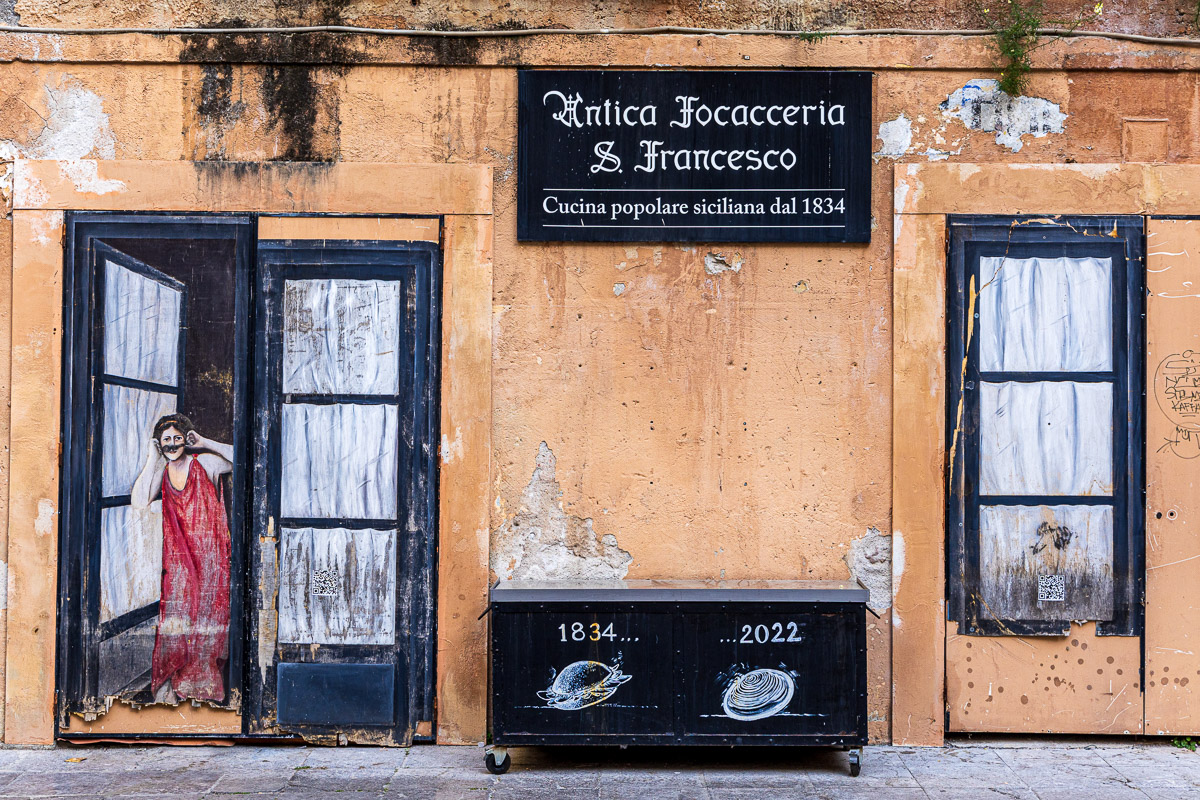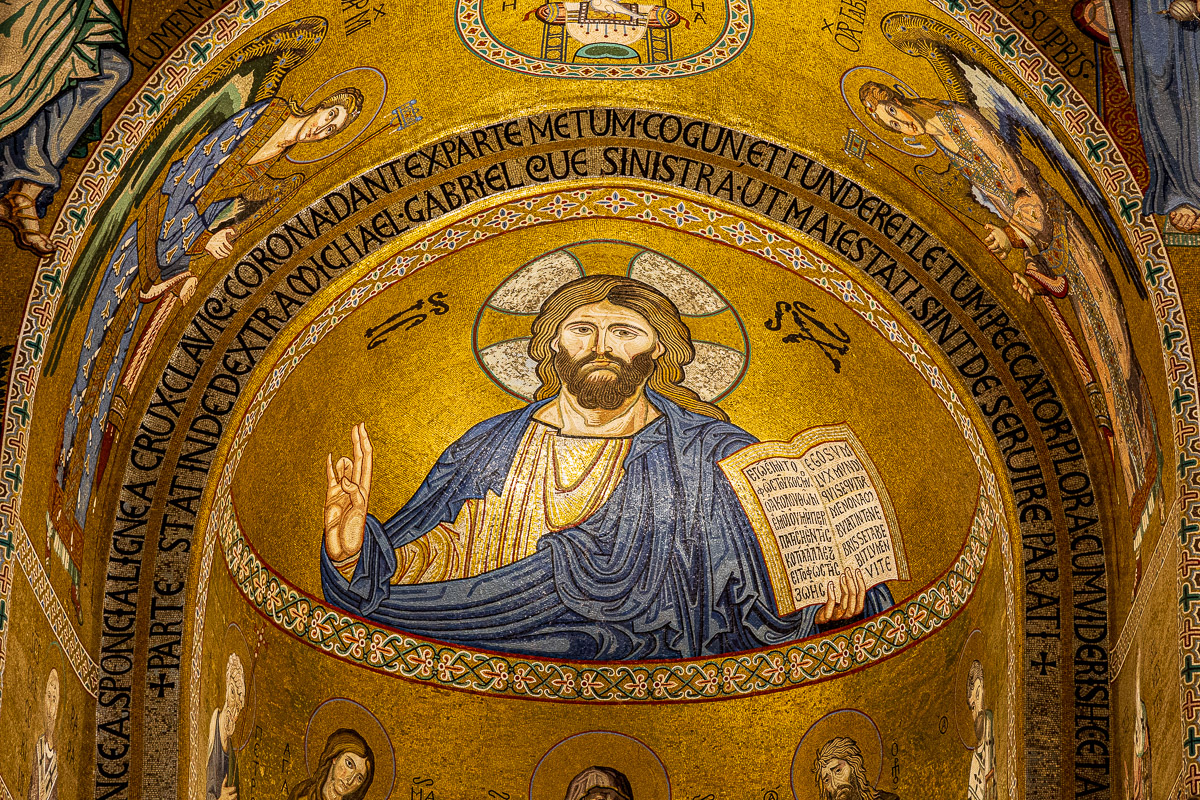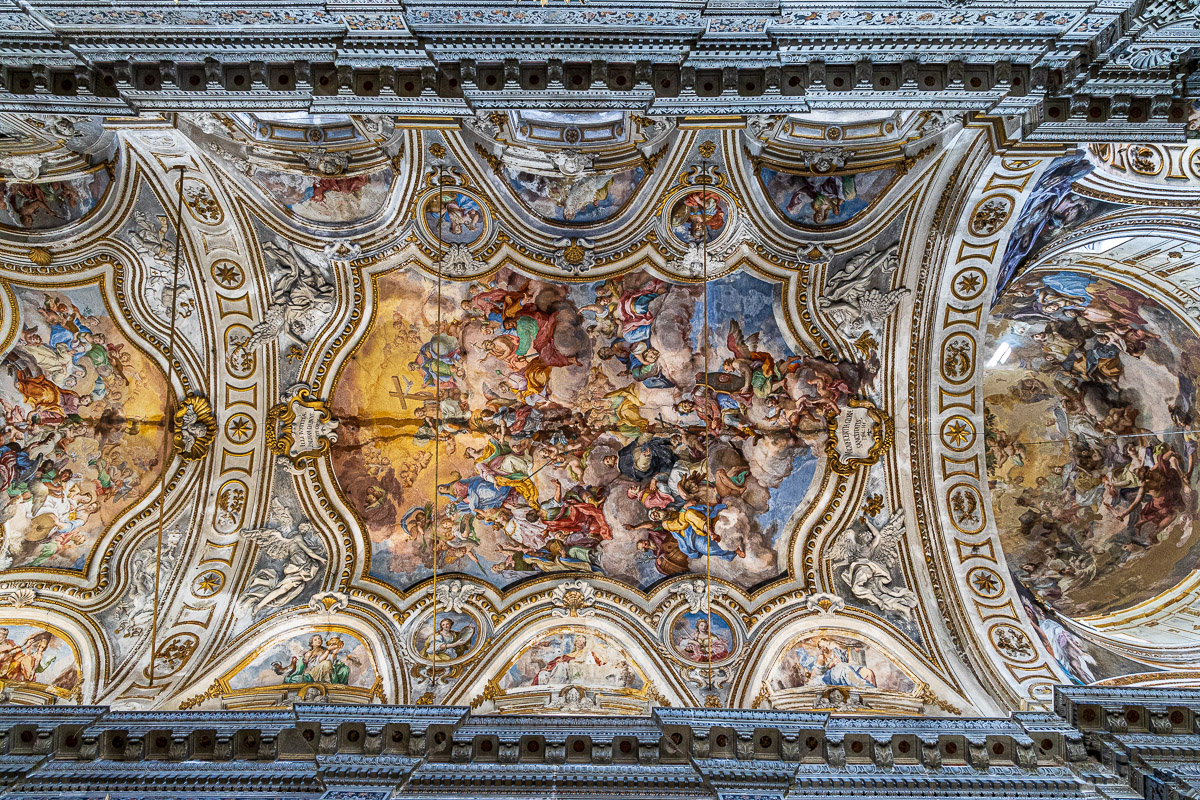After two temple-touring days, we left the Greeks behind and made our way to Palermo, the capitol of both the autonomous region of Sicily and the city’s surrounding metropolitan province. The Greeks never conquered Palermo and it only began to thrive under Arab rule in the 9th – 11th century. Today it has a population of about 640,000 and, despite its reputation for being rundown, traffic-clogged and synonymous with the Mafia, Palermo has been making significant strides towards revitalization.

We checked into a wonderful hotel, the Grand Hotel Piazza Borsa, which is located in the historic center of the city. After breakfast the next morning, we headed out with a local guide for a walking tour of the city, and we did a lot of touring. We toured in the morning. We toured in the afternoon. We visited museums, chapels, and churches covered from floor to ceiling with art and amazing mosaics of gold and jewels. We saw so many places and things that I can hardly remember them all. Then, to cleanse our cultural palettes, we went to a concert in the evening. To avoid overwhelming you with hundreds of photos and pages of text, I’ll try to give a Readers’ Digest version of the day’s activities and provide links for additional information.
Mouse over the small photos in galleries to see captions.
Click on any one to enlarge, then use arrows to scroll through the rest of the images.
As we started our walk, I got the feeling I was being watched. Was I concerned about the Mafia? Despite that, I soon found myself, as usual, fascinated with street scenes — the old buildings, the decorated walls, the unique doorways, the plant-covered balconies. In addition to plants, some of the balconies had blankets hanging along the railings which, according to Rick Steves, allowed “skirt-wearing women to hang their laundry while protecting their modesty.” We even passed a huge tree known as “The Strangler Tree.” I didn’t get too close to that.
The first stop on our walking tour was at the Gallery of Palazzo Abatellis, which is Palermo’s major art museum. Its two most famous works of art are The Triumph of Death, artist unknown, a 20′ x 20′ fresco depicting Death as a skeleton firing arrows at the rich and the poor, and The Virgin Annunciate by Antonello da Messina, showing Mary looking out at the unseen archangel Gabriel. Except for its size, The Triumph of Death did not appeal to me. Mary in her soft blue cloak, however, was very beautiful. I also thought that two tall crucifixes standing in a large sunlit room were interesting. Shortly after leaving the museum, a more contemporary painting on an outside wall provided some comic relief.
After walking past the beautiful, sunlit Palermo Harbor, we reached our next destination, the Oratory of Rosario di Santa Cita, a Baroque chapel best known for the remarkable stucco tableaux scenes. The painting over the altar, which depicts a Madonna of the Rosary and Child with Dominican Saints, was painted by Carlo Maratta in 1694. Passing the Church of San Domenico, we then made our way to the Oratory of Rosario di San Domenico. Compared to the mostly white stucco Santa Cita, this chapel was surprisingly colorful. The painting over its main altar, depicting the Madonna of the Rosary with numerous saints, was painted by Anthony van Dyck during the 1624 plague.
After lunch back at the hotel, we continued our whirlwind walking tour of the historic center of Palermo. Our first stop was at the — insert your favorite adjective of incredulity here — Palantine Chapel. This is part of the Norman Palace and was originally intended to be the private chapel of King Roger II of Sicily. The walls are covered with golden mosaics depicting scenes from the Bible and the floor consists of marble inlays in a pattern that mirrors the ceiling. I’ll save 5000 words with the following photos.

On the final leg of our tour we walked past the Church of San Cataldo, a red-domed church that was built in a typical Arab-Norman architecture, and then went into the Palermo Cathedral, which had been a mosque under Arab rule. Then we visited the Church and Monastery of Santa Caterina d’Alessandria. This is the most ornate church I’ve ever seen. Rick Steves describes it as a “hyperdecorative architectural style” with an “explosive Sicilian Baroque interior.” I could not come up with a better description so I will again let my photographs do the talking.

Some beautiful relaxing music, a delicious evening meal, and a warm comfortable bed were a great way to finish the day.
<— Temples and more Temples (Sicily Part 9) :: (Sicily Part 11) Up to the Mountaintop, Down to the Sea —>